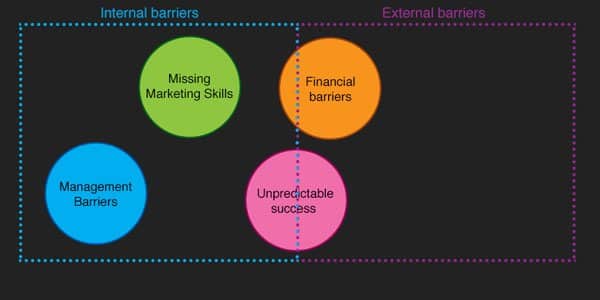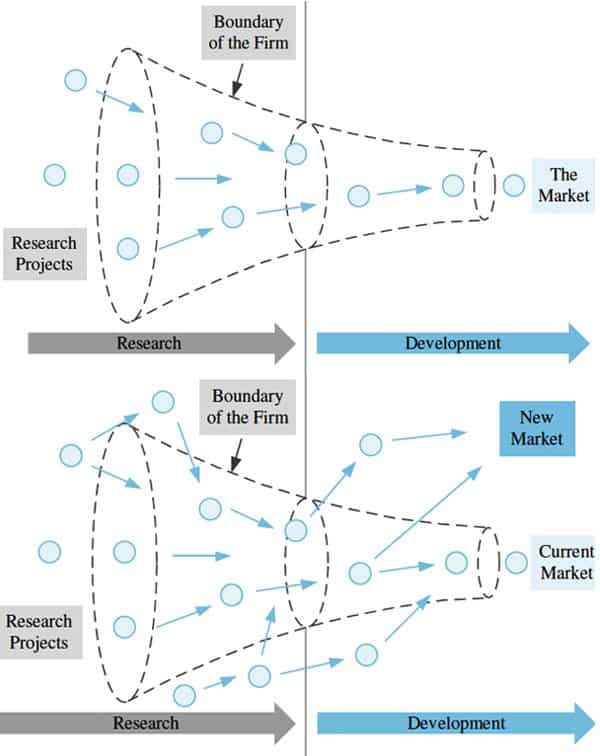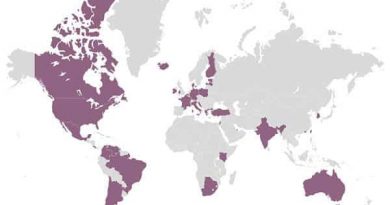Why Creative Companies Can’t Innovate
There is noticeable agreement between scholars and practitioners about the positive correlation between innovation and achieving success within the market. Many countries adapt a national design policy to build a better economy such as the UK and Germany. However, the question is “why some companies can’t innovate compared with others?” Why are some companies able to push creativity into the market as a new product compared with other competitors? Many examples in the creative sector show a high variation between a company’s ability to innovate such as IKEA, LEGO, Apple, Starbucks, P&G, and others.
In order to answer this question, we need to highlight the barriers that face innovation inside companies. These barriers can blockade the creative process and prevent ideas to move from the research stage to the production process. Innovation barriers can affect the creativity inside the company in both direct and indirect ways. These barriers can be differentiated as internal and external barriers; the internal barriers relate to internal situations such as missing marketing skills, management barriers, and unpredictable success. The external barriers on the other hand relate to extrinsic factors that affect the innovation process directly or indirectly such as financial funding and capital support. The internal barriers are more difficult to overcome compared to the external barriers.
Some barriers can be affected with both internal and external factors at the same time, which makes these barriers more difficult to fix compared with the others. For example, financial problems can be affected by internal factors such as the financial experience of the managers inside the company. Also, the company can be affected with external factors such as the lack of funding or venture capital support. The external factors include the following:

Financial barriers
Financial barriers are identified as one of the most significant hindrances for the innovation process. Companies face lack of finances to fund R&D processes on multiple levels. The innovation cost is remarked as one of the significant factors that prevent companies from investing in new product development (NPD). A majority of firms prefer to invest in existing and successful products instead of gambling with unpredictable success.
While innovation cost is one of the direct financial barriers, the cost of monitoring and assessing the new innovation process can be considered an indirect cost for innovation. Many companies especially the small to medium companies (SMEs) lack the budget as well as the experience to fund both direct and indirect innovation costs. In addition to these costs, the lack of external support such as limited access to financial funding and governmental support can be identified as part of the external financial barriers. Investors and commercial banks are reluctant to provide the financial support to companies with high risk profile such as SMEs as well as innovation projects due to the high risk.
Due to the high risk of the innovation process, companies need to find solutions to fund the R&D process. These solutions are not necessarily financial related, some can be solved by changing the business model or the innovation model from a close innovation to an open innovation mode. In such models, companies can privilege from the input of external ideas or selling failed innovative ideas to different business models.

Unpredictable success
The creative sector has different characteristics compared with other industrial sectors. Creative companies invest in ideas that can lead to new products. The success of these type of products are hard to predict especially in the early stage of the research process. In Berlin Germany, 67% of the companies working in the creative sector acknowledge this as one of the obstacles that face them to get funding. Investors find it hard to assess the return of investment (ROI) in creative projects. Therefore, companies should develop new financial resources that can be used to fuel the innovative process in addition to depending on external funding.
Missing Marketing Skills
A majority of the creative sector companies focus on the innovation process at the expense of the marketing skills required to understand the target consumer. The innovation and creative process inside companies should focus to meet with consumer needs which can only be achieved through a solid marketing research process. In this process, the research team needs to build a clear understanding of the process to the market segment through a number of tools including face-to-face interview, surveys, persona and others. The creative and innovation process should then be designed to meet with these needs. This clear understanding can reduce innovation risk through building a product that consumers need and are willing to pay for it.
Management barriers
The management of the creative process has its characteristics compared with other sections inside the company. The lack of innovation management skills can be one of the major internal barriers. Most of these skills are related to management experiences and ability for effective judgment. The innovative process is based on disruptive ideas which are non-traditional which usually changes the existing routine and schedule. Therefore, the management team should be ready to face this disruption and manage it effectively to achieve innovative success.
In most companies, the management machine is following business models and processes that are not ideal to achieve creativity and innovation, which eventually leads to failure of the innovation process or even to the point of terminating it. Managers working in the creative sector should be able to understand the nature of this field and what it takes to use all financial, human resources and business resources to turn creative ideas into innovative products that can achieve market success.
Other barriers
As mentioned earlier, the barriers above are generally applicable to different companies. However, there are additional barriers that are related to the location of the company, business niche, and type of consumers. For examples, SMEs in China face governmental barriers related to laws, regulations, and excessive taxation. In other countries such as United Kingdom, small and medium companies face problems related to the lack of consultancy and technical support.
Conclusion
There is a positive correlation between risk and success. The increasing risk associated with the creative and innovation process is aligned with the success that can be achieved through improving the market competency and position. However, there are many barriers that face creativity and the innovation process. Companies should have a clear understanding of the barriers that face the innovation process in order to predict the consequences and avoid failure.
While there are generic barriers that face the majority of companies, there are localized barriers related to the location and size of each company. Planning to overcome these barriers prior to the innovation process can contribute to reducing the risk and failure expenses that result from facing these barriers. The success of the overall process leads to the successful final product finds its way to the market.






